Chernomorsky Shipbuilding Plant: military days of dry cargo ships built in Nikolaev
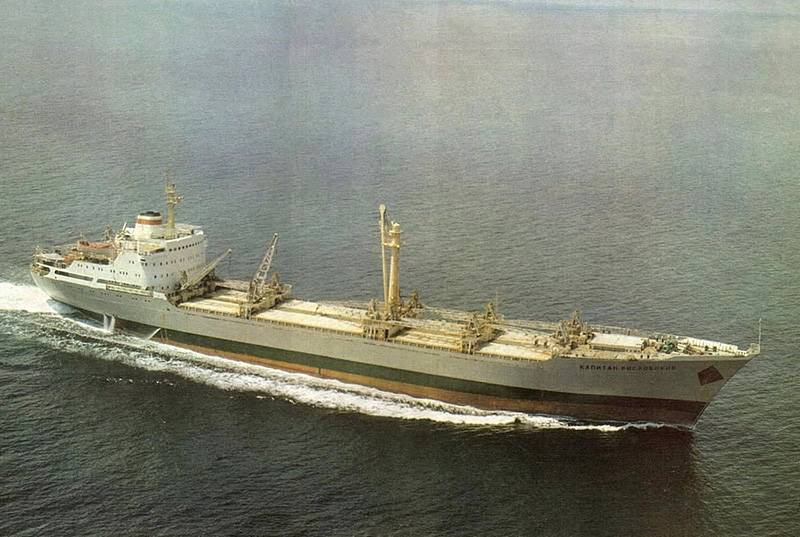
1 August 1966 was laid the main cargo ship "Captain Kushnarenko". Full-load displacement was 22180 tons, the power of the main power plant - 13500 l. s., full speed - 19 nodes. 1966 to 1975 The Black Sea Shipbuilding Plant built twenty-two such cargo ships and one hull. It was this building that was used to create research vessel "Akademik Sergey Korolev". From 22, 7 dry cargo ships were built for export to Greece, Germany, Kuwait and Norway. In those years, the Soviet Union built such high-quality ships that they did not stop to buy them, even in the West.
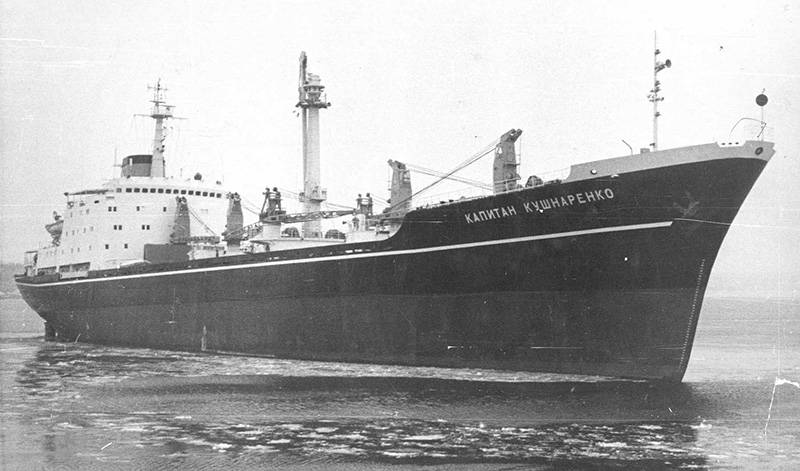
Another large series of dry-cargo ships that were built around the same years (1961 – 1976) in Kherson (45 units) and at the Black Sea Shipbuilding Plant (8 units) belonged to the “Bezhitsa” type. Of this number, 34 were exported.
Military weekdays of Soviet dry cargo ships
Already in 80-ies, two dry-cargo ships built by the Black Sea plant “Captain Chirkov” (such as “Theodosius”) and “Captain Vislobokovy” (such as “Bezhitsa”) were associated with a dramatic combat episode that occurred in Angola. There was a civil war between the government headed by President Eduardo dos Santos and the UNITA group supported by the Republic of South Africa. Soviet military experts and a contingent of troops of the Republic of Cuba were in friendly USSR Angola.
The socialist countries and first of all the Soviet Union and Cuba provided the government of Eduardo dos Santos with all possible support: weapons, equipment, military equipment and products of economic profile. Cargo was delivered by sea through the ports of Namibe (up to 1982, Mosamedish), Luanda and other In an effort to prevent, if not hinder, the implementation of cargo transportation for the needs of government forces, South African security services began to implement a set of measures, primarily of a subversive nature.
In 1980's off the coast of Angola, 15 merchant ships belonging to different states were blown up. So, on the night of 29 on 30 in July 1984, the ship Arendsee under the flag of the GDR was blown up by two mines. On board were about 10 thousand tons of ammunition for the Angolan army. Another mine did not explode, and the Soviet specialists from among the seamen of the headquarters of the 30-th brigade of surface ships, located in Luanda, managed to neutralize it by disrupting the hull with a line attached to a high-speed boat. After studying the collected artisan method (charge weighing 11 kg was placed in a rectangular can of olives), an explosive device was destroyed.
But the largest diversion was carried out against the Soviet courts in 1986 year. These were dry cargo ships built by the Black Sea Shipbuilding Plant. “Captain Chirkov” and “Captain Vislobokov” arrived in the port of Namibe in the first days of June 1986. Among other things, in their holds was a military cargo for government troops. They had to unload and proceed further to Brazil. Because of the total chaos in the organization of unloading operations that prevailed in the port, where sloppiness was closely intertwined with outright sabotage by local authorities, both ships stood for almost two days on anchors on the outer roadstead. Subsequently, this delay played its fatal role. Only thanks to the firm and persistent position of the Soviet military advisers and the Cuban state security officers who joined in, both the bulk carriers became at the pier for unloading.
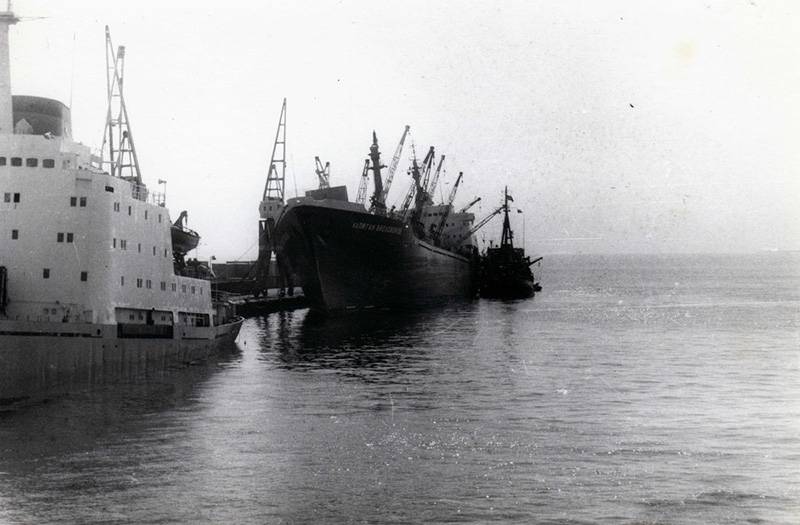
In 4 hours of 55 minutes of the morning of 6 on June 1986, three magnetic mines exploded at the left side of “Captain Vislobokov” with an interval of 5 minutes. 5 hours 15 min. - 5 hours 19 min. three explosions thundered near the side of the "Captain Chirkov", also left, and the cargo ship began to roll on board. Crews took their places in alarm and began to struggle for survivability. Additional mooring lines were brought in to prevent overturning. No signs of panic were noted - all orders were executed quickly and clearly. Fortunately, there were no casualties among the teams. When the ships were prevented from overturning, on the orders of the captains Marat Sultanovich Galimov (“Captain Vislobokov”) and Naum Moiseevich Vinokur (“Captain Chirkov”), the crews were evacuated to the coast, since there was no guarantee that detonation of the unloaded ammunition would not occur. Both Soviet ships landed on the stern and had a significant trim.
A little later, at 5 hours and 20 minutes, there was an explosion of the Havana Cuban transport standing on the wall of the pier — four explosions thundered on it. The port authorities did not find anything better than to order the damaged ships to immediately leave the pier, since, having sunk, they would block the possibility of its further operation. The Soviet captains ignored this meaningless order, and the Havana gave the moorings and moved away from the coast, but only in order to topple overboard and sink. Soviet sailors received first aid from the rescue tugboat “Proud” located in the port of Riga's refrigerated base fleet. At about 12 noon, his divers examined the underwater parts of the dry cargo vessels - each of them had three holes with sizes from 1 to 2 meters. In addition, two unexploded mines were discovered.
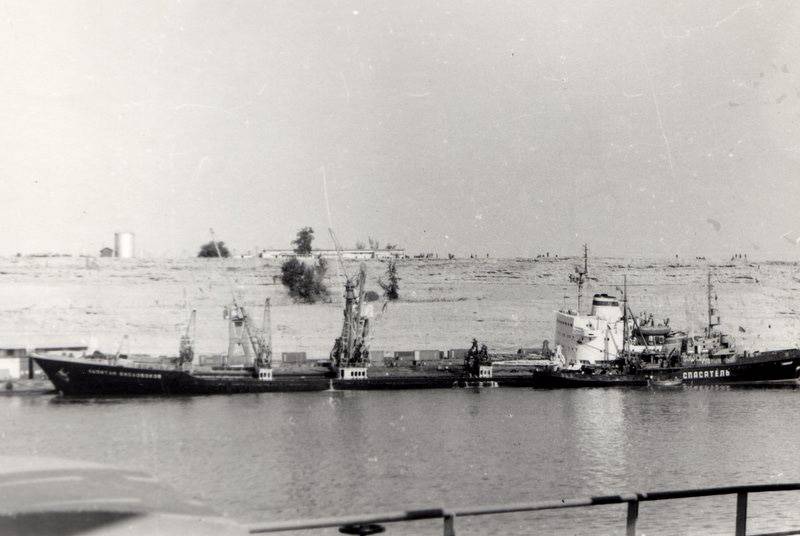
This was an extremely dangerous situation, as there were several thousand tons of military cargo in the Chirkov and Vislobokov holds, including rocket launchers for Grad installations, 122-mm howitzers and mortar shells. The crews, it was decided to bring ashore - on the ships to maintain order there were volunteers, the radio operators kept the watch. Both captains also did not leave the courts entrusted to them.
Soon, the "Captain Chirkov" managed to start a diesel generator and establish contact with the Soviet office in Luanda, and through it - with Moscow. By order of the leadership, the ships of the Northern Fleet located near the coast of Angola were sent to the port of Namibe - a large antisubmarine ship "Stroyny", and a little later the floating master "PM-64". A special commission from Moscow arrived to assess the damage and organize rescue operations. A group of combat swimmers from the Red Banner Black Sea Fleet, commanded by Captain 2 of the rank of Yury Ivanovich Plyachenko, arrived from the Crimea. The group included specialists of the highest level - a few people had just returned from a trip to Ethiopia.
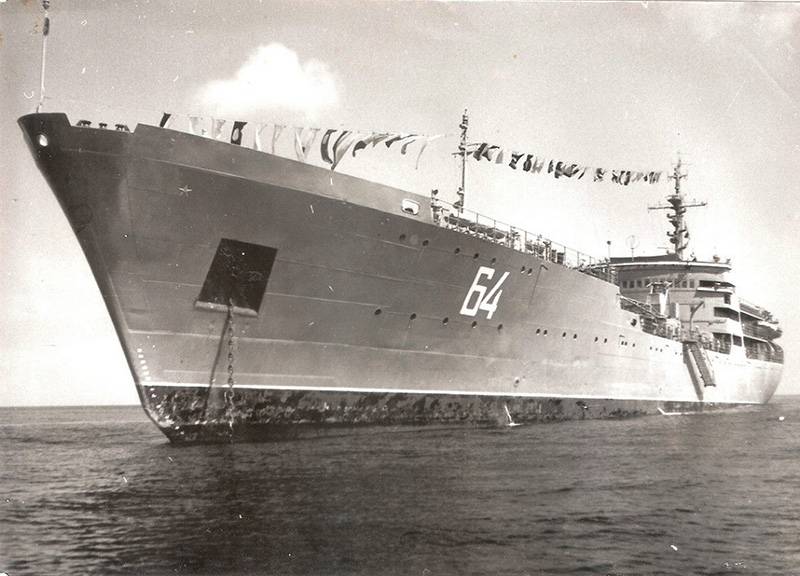
They inspected the underwater parts of both ships and collected fragments of exploded mines. After analyzing the situation, they decided to unload the bulk carriers and pump out the water from the flooded holds before the demining procedure. At first they were engaged in “Captain Vislobokov” - his position was the most difficult. At 11 June, the dry cargo ship had about 8 thousand of seawater water inside it. In its holds were about 700 tons of explosive cargo. The position of "Chirkov" was a little better - he took less water.
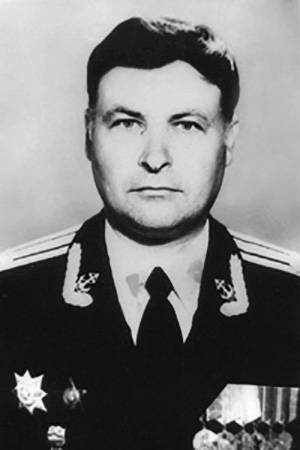
A rescue operation headquarters was created at the scene from the specialists in repair and diving work and from the captains of both dry cargo ships. Initially, it was necessary to seal the holes and dry the holds. Captain 2 of rank Plyachenko, of course, assumed responsibility by giving recommendations to carry out work on mined ships, all his calculations were correct. With the help of underwater welding and wooden box-type plasters, at first they were patched with metal sheets of holes from the outside of the sides, and then, gradually pumping out water, from the inside. Water pumping was done in doses and in a strictly defined sequence. These precautions were taken so as not to disturb the stability of the ship.
In addition to rescue workers and divers, the crew also took an active part in the work carried out. While the holes were being sealed and the water was pumped out, the dry, intact holds were unloaded. According to members of the headquarters, the position of the damaged ships was critical, but not at all hopeless. The sailors from the floating master PM-64 carried out repairs of the electric motors extracted from the water, of which there were a sufficient number — they had to be completely dismantled, disassembled, insulated, reassembled, and then re-installed at relying places.
While the rescuers and crews were engaged in the rescue of Soviet dry cargo ships, the energetic Cubans did not sit idly. The lifting of the “Havana” due to the damage it had been recognized was not economically viable, so a large technological hole was made in the transport board protruding from the water (the “Havana” lay on its side). Having fitted the crane, the Cubans were unloading their ship directly from the hold. Havana was the transport that delivered food and other supplies to the Cuban military contingent in Angola.
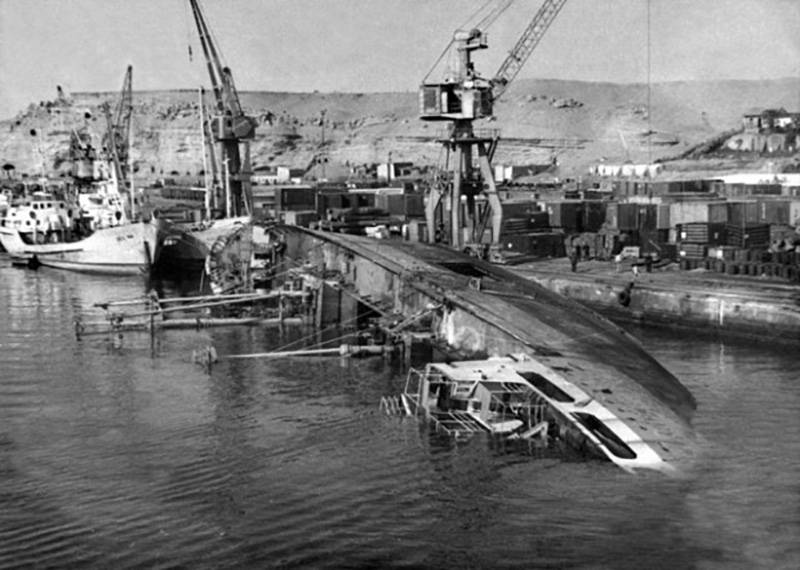
The most important task was not only pumping water and draining the holds, but also restoring the tightness of the compartments. As a result of explosions of magnetic mines, the bulk carriers received not only holes, but also other damages. The hull shell was deformed - cracks and dents were formed in it, the integrity of the pipelines was broken. Local forces, even with the involvement of "PM-64", it was impossible to solve these problems.
For more serious repair work in Namib, the rescue ship Jaguar was to arrive from the Black Sea. It had ample opportunities in terms of repair and restoration of shipboard equipment. The Black Sea Shipping Company sent a team of high quality repairmen who also joined the work.
While the repair work was going on, political passions were heating up around the incident in the port of Namibe. Already on June 6, the Angolan media announced that the port had been attacked by South African missile boats that had launched Scorpion anti-ship missiles. The fact is that in addition to the blasting of two Soviet and one Cuban ships, a warehouse of fuel and lubricants was, unsuccessfully, attacked. He was fired from grenade launchers from afar, but this action did not bring significant damage.
Years later, it turned out that rocket boats did take part in the operation, but they did not release any missiles. The Soviet Union also expressed a strong protest, South Africa denied everything at the official level, arguing that the accuser had no evidence of Pretoria’s involvement. 18 July 1986 in the UN Security Council of the USSR proposed the adoption of a draft resolution condemning the attack on the port of Namibe and the bombing of ships in the harbor. However, the United States and Britain vetoed it. To prove the involvement of the armed forces of South Africa, we needed solid evidence - two such convincing arguments were still in the form of unbroken mines on the buildings of Captain Vislobokov and Captain Chirkov.
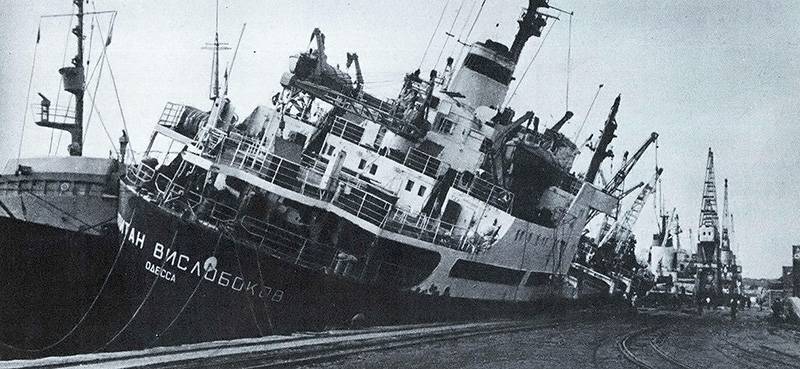
After inspecting the mine on the Vislobokovo, they decided to separate it from the body with a directional microexplosion. For this purpose, a wooden bar with 40 grams of TNT attached to it was installed on top of a mine. They had thoroughly prepared for the operation: a concrete wall was erected in the section of the hull, where there was a mine on the outside, which was supposed to take an explosion. Volunteers worked in which there was no shortage. Finally, by 28 Jun all preparations were completed. By this time, the much-awaited Jaguar and repairmen from Odessa arrived in Namibe. A day earlier, the 27 numbers, the unloading of “Captain Wislobokov” was completely over.
The next day an operation to destroy the first mine was to take place. All ships were taken out of the harbor, and port workers were taken to shelter. On command, a charge exploded - the mine broke away from the ship's hull and detonated already at depth. The explosion was powerful enough - the Captain Vislobokov's corps swayed for some time. However, the main thing was done - the mine was destroyed. The concrete wall helped to extinguish the blow - in the area of the explosion, only two small cracks were discovered by divers from the Jaguar, which were quickly repaired. On July 3, accompanied by a large anti-submarine ship Gordy, the Captain Wislobokov went to Luanda, where it was planned to carry out its docking.
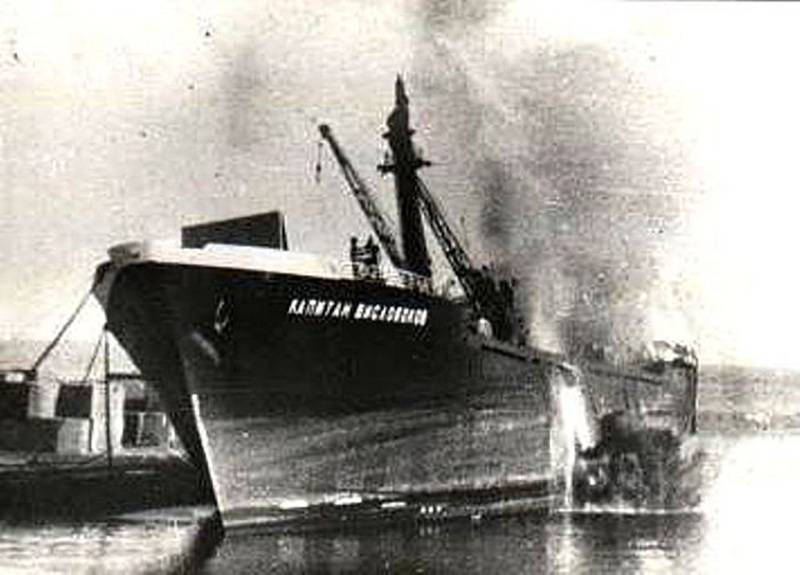
The last mine had to be neutralized by all means and carefully examined by the manufacturer. At the "Captain Chirkov" were made the same preparatory activities. In the place where the mine stuck, and this was the hard-to-reach section of the propeller tunnel, a concrete wall was also erected. The operation to remove the mines was scheduled for July 11.
The miners of the Black Sea Fleet calculated that the “product”, which had already been attached to the board of the bulk carrier for a month, should have run out of battery power, and this should have facilitated the demining procedure. A line was attached to the mine, the other end of which was attached to the boat. The operation was carried out directly by the captain of the rank 2 Plyachenko. On command, the boat, having given full speed, pulled the mine from the hull - it did not explode. Then the dangerous trophy was carefully towed to the deserted shore, where it was to be disassembled with all the precautions.
The process of dismantling the mines was carried out carefully by directional microexplosions. What was happening was carefully photographed. It was not possible to establish the country of manufacture, as the mine was “international” in terms of equipment: it was attended by parts of English, Japanese and Dutch production. After the fourth microexplosion, the self-liquidator worked.
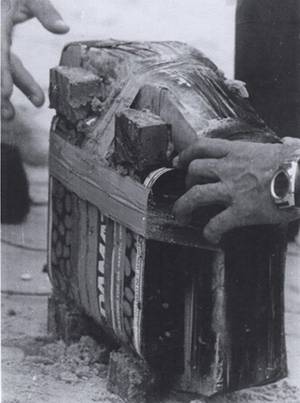
The very next day, Captain Chirkov, towed by the lifeguard Jaguar, departed for Luanda, and from there 27 of August - to Odessa. The cargo ship did the second half of the journey on its own. The operation to rescue two Soviet courts was successful - following the results, three Black Sea officers who were part of the Plyachenko group were awarded Orders of the Red Star, and the rest were awarded with medals "For service in the USSR 3-1 degree". Similar awards were given to several crew members of the floating PM-64.
The Havana, partly unloaded by Cubans, was decided not to be restored - after lifting in order to clear the free approach to the pier, it was towed to the depth and flooded.
As it became known later, sabotage in the port of Namibe was carried out by 4 combat swimmers from the reconnaissance and sabotage regiment of the commandos of the Republic of South Africa. But even in those years, Soviet experts did not doubt the authorship of events that occurred in the Angolan port. Among the subordinates of Jonash Savimbi, the leader of the UNITA group opposing the government, there simply were no professionals of this level.
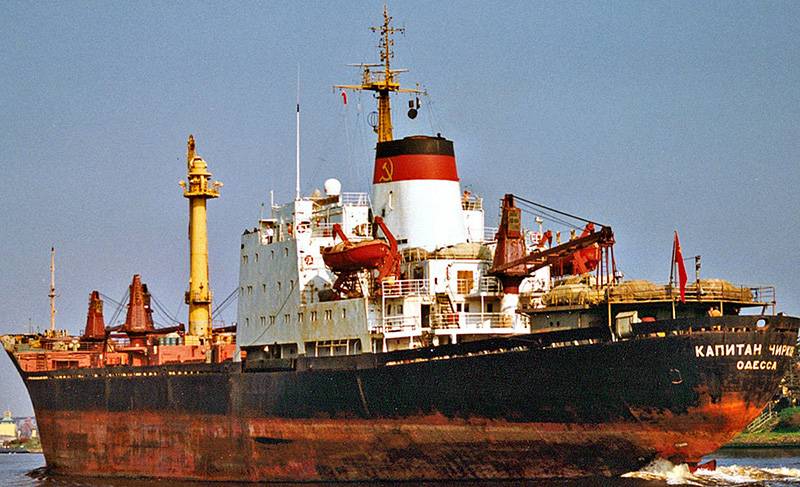
Peaceful dry cargo ships built by the Black Sea Plant, like their predecessors - the sea workers of the Great Patriotic War, again found themselves in the war. "Captain Chirkov" continued his career. Repair of the more injured "Captain Vislobokova" was recognized as inexpedient - the cargo ship was sold to Spain for scrap, and it went to Barcelona under its own power.
Information